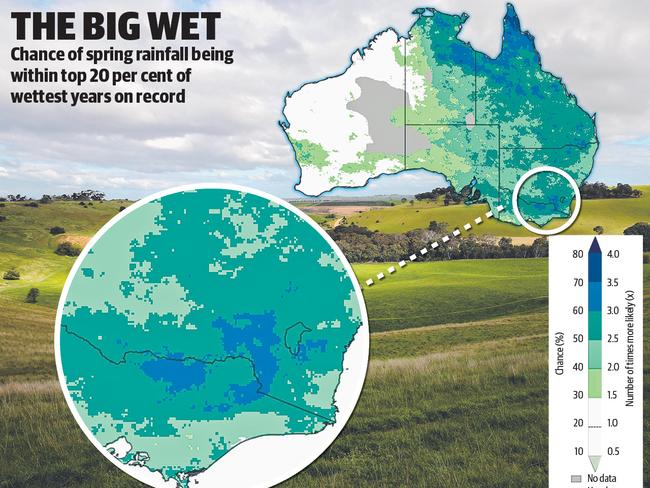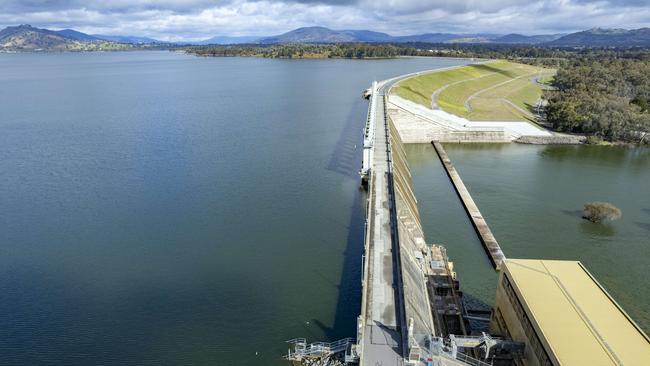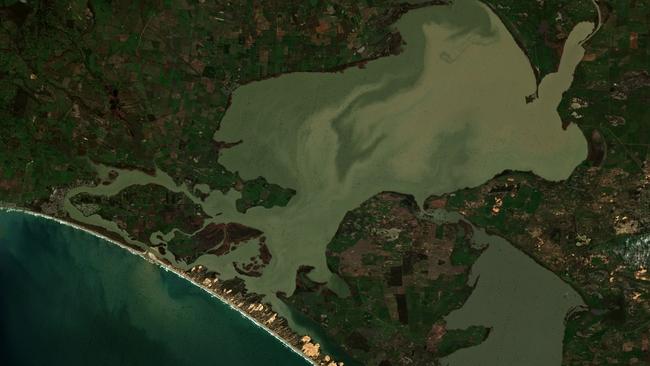Murray Darling Basin soaked as IOD drops to 2016 levels
The Murray Darling Basin’s dams are full, catchments are soaked and global climate models say more rain is on the way.

Global climate models are heralding a big wet across southeast Australia this spring as the Indian Ocean Dipole hits its lowest level since 2016 — when large parts of the southern Murray Darling Basin received their highest rainfall on record.
The BOM’s latest outlook for September to November forecasts “unusually wet” conditions are three to 3.5 times more likely across the Upper Murray and Murrumbidgee catchments, as well as the flood-prone Ovens, King and Broken river catchments in Victoria’s North East.

“All (global) models surveyed indicate a negative IOD event is likely to develop in the coming weeks, and to persist over the southern hemisphere spring,” the BOM reports, increasing the likelihood of a wet spring.
The outlook comes at a time when the Murray Darling Basin’s catchments are saturated and its storages close to full, leaving little room to capture further inflows and posing the risk of major spills and floods in downstream communities.
The massive 3.8 million megalitre Dartmouth Dam is at 95 per cent capacity, while its sister storage — the Hume Dam — is at 94 per cent.

In NSW’s the Darling River’s Menindee Lakes are effectively full, while the Murrumbidgee catchments Blowering Dam is at 98 per cent capacity and the smaller Burrinjuck Dam sits at 88.6 per cent.
A total of 9.14 million megalitres of water has already flowed out of Murray River’s rain-soaked catchments and across the South Australian border over the past 12 months, compared to just three million megalitres in 2020-21.

The last time the catchments were this wet was in 2016-17 when 9.2 million megalitres flowed across the South Australian border.
The BOM has also issued a La Nina watch alert, meaning there is about a 50 per cent chance of it returning later in the year.
A BOM spokeswoman said “with wet soils, high river levels and near-full water storages, many catchments have a reduced capacity to absorb further significant rainfall”.
“With outlooks for eastern Australia indicating an increased chance of wetter-than-average conditions, the flood risk remains high,” the spokeswoman said.
But it appears Emergency Management Victoria is not making any special arrangements for increased flood risk, simply stating “it’s important for communities to do everything they can to stay safe – and that means preparing for flood and storm emergencies in the same way they prepare each summer for fires.
“The risk of flood has been identified as a key emergency risk by a number of critical infrastructure sectors,” EMV stated.
At this stage farmers are optimistic about the season ahead.
“A wet spring means cheap water,” Victorian Farmers Federation water council chairman Andrew Leahy said. “It means we can prepare for the next dry spell by growing extra fodder.”
But the Murrabit dairy farmer is well aware of the risk he faces if a wet spring pushes too much water down the Basin’s rivers, after watching a third of his farm disappear under the 2011 floods.
“I had a block that stayed under water for 16 weeks,” Mr Leahy said, and given the BOM’s latest outlook “we are probably facing a flood risk”.
In response to the last floods Mr Leahy has set up his silage pits on high ground and started building what he calls “a big barn” above the one-in-100-year flood mark, to boost his 600-cow herd’s productivity.
A wet spring also means Victorian Murray irrigators also face losing some of the 114,517 megalitres they carried over from last season in spillable water accounts.
Water resource manager for northern Victoria Mark Bailey said “entitlements holders in the Murray system should note a deduction from spillable water accounts will occur in mid-August, after the volumes released (from Lake Hume) during July are confirmed.”
But while the Basin is brimming with water, grain growers across Victoria’s west are looking for more rain.
Rupanyup grain grower Andrew Weidemann said “we’ve been a month without decent rain”.
The BOM has also issued frost warnings this week, as a high-pressure system sits over southern Australia, pushing night-time temperatures below 0C in the Wimmera and southern zones.




